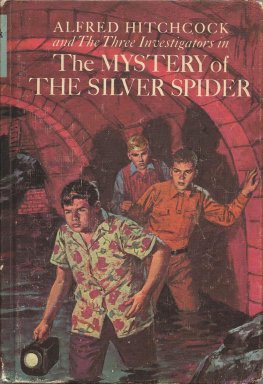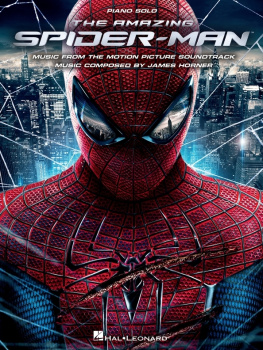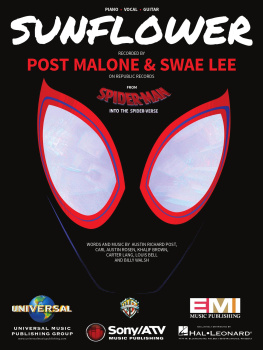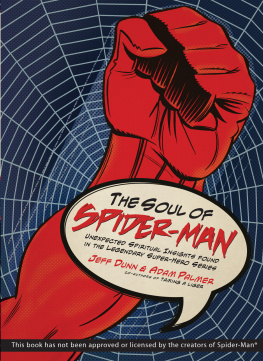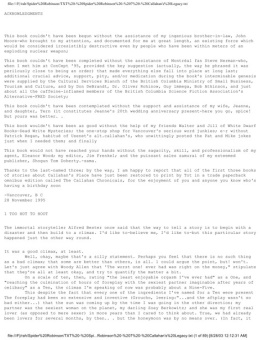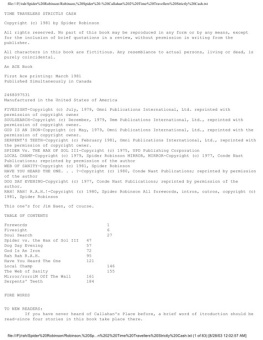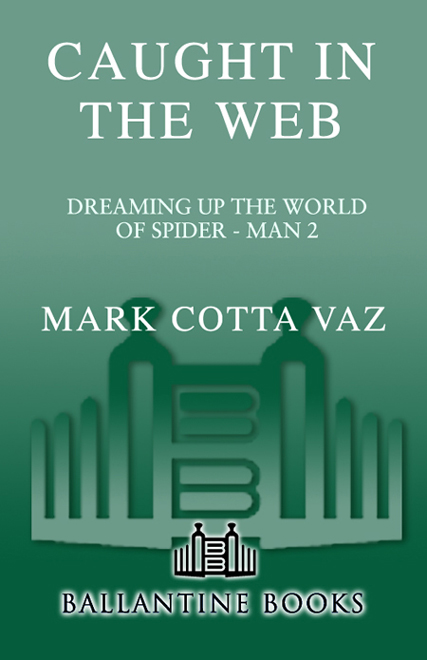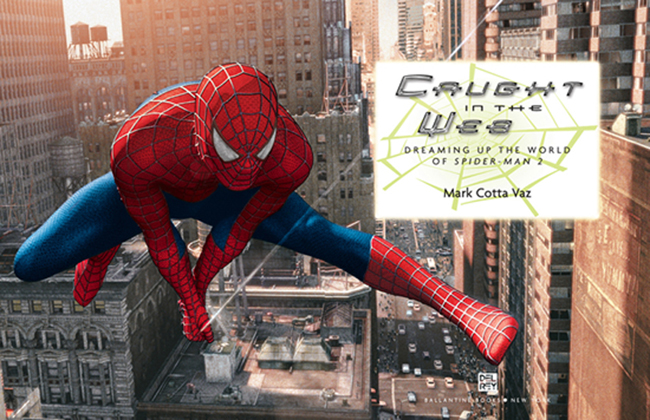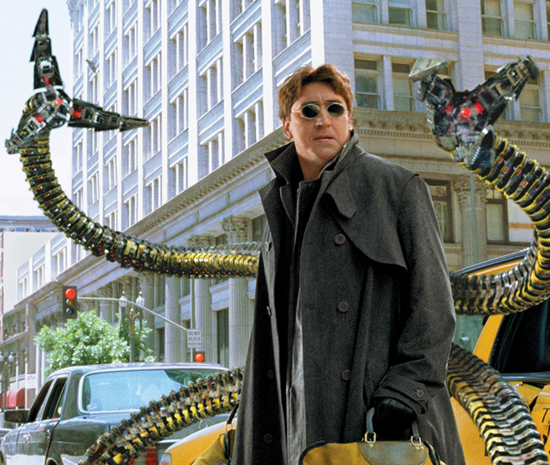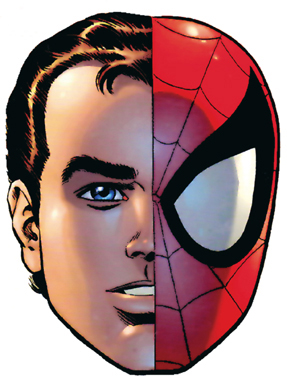M y appreciation to the Spider-Man 2 production in general but especially to Neil Spisak and his art department for being gracious hosts and making me feel welcome during my Sony visits. Special thanks to Jan O'Connell for all her help, particularly for her time in pulling a stellar selection of art from which I selected the images for this book. Thanks also to Theresa Greene for helping with logistics. Thanks to Becky Chaires for facilitating connections with Sam Raimi and to Rachel Schwartz for doing the same with Avi Arad. (By the way, those interested in the battle for Marvel that Arad alludes to in the opening of this book should check out Dan Raviv's Comic WarsWall Street intrigue at its finest.) Thanks also to Ozzy Inguanzo for storyboards and artwork.
My appreciation to Sam Raimi, Grant Curtis, and all the production principals who gave of their time. I'm most grateful to the artists and art directors who contributed their art and insightsthis book is yours.
On the Sony side, Cindy Irwin was the greatest, as usual. Kudos to the Sony stills department, especially Andrew Pack, who assisted me in my visit to the stills department, and to Jerry Schmitz, who connected me with the genius guys at Sony Pictures Imageworks. And here's a thanks and a shout-out to Grace Ressler, Christiane Friess, and Ric Wolfe.
And exalted among the True Believers is Steve Saffel, editorial wizard behind the curtain of this publishing enterprise, who sends me on these cool missionsExcelsior! And more of the same to the guardians of the mythology at Marvel. And the look of this book is simply super, thanks to Sylvain Michaelis of Michaelis/ Carpelis Design Associates. Sylvain is one of the best designers in the business and his handiwork is beautifully evident herein. And before I exit stage left, here's a bouquet to Victoria Shoemaker, my literary agent and another True Believer at heart, a salute to Joe Spieler, a high five to Bob Wyatt, and a raised glass to Mike Wigner (may your bicycle tires always be fat and the road home straight and paved). Love to my parents and brothers and sisters. And to Spider-Mankeep swinging, pal.
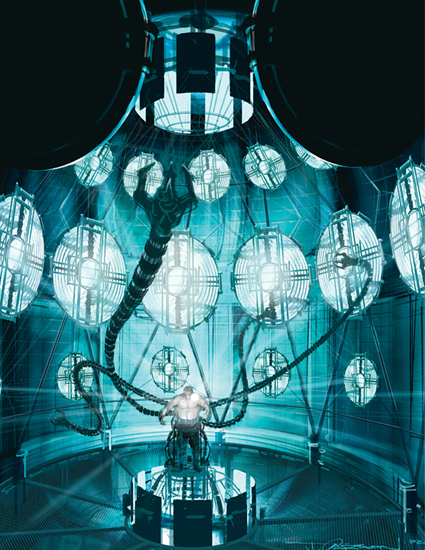
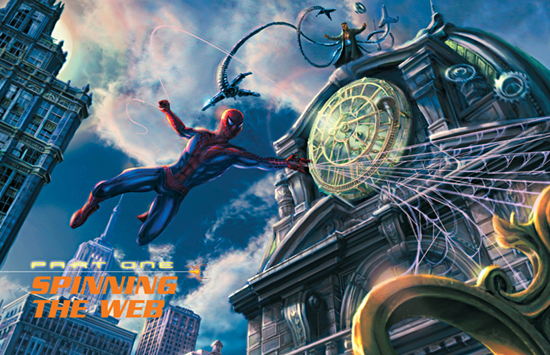
Previous spread art by Wil Rees.
T he Los Angeles headquarters of the Marvel Entertainment Group doesn't fit the traditional image of the Tinseltown power center of legend. There's no gurgling water fountain or cathedral-domed lobby, no rich carpets or chic antiques on display, no endless corridors leading to secret sanctums.
Indeed, the Marvel offices are located on the second floor of an unassuming building, down a narrow corridor lined with plain office doors. But behind one of those doors there lies a nexus point of the Marvel universe, a place of imagination where Super Heroes are transported off the comics pages and into other media. Here there's a sensory assault of color and iconic imagery: toy action figures posed on shelves and desks; walls decorated with posters of the vampire slayer Blade, the Incredible Hulk, the Uncanny X-Men, and other Marvel heroes who have, in their own unique way, become movie stars.
In this office one balmy day in September 2003, there was a scent of the approaching autumn in the airand a palpable sense of anticipation. Principal photography for Spider-Man 2 was a month from wrapping and Avi Aradthe former toy designer and Toy Biz partner, now one of the architects of the Marvel universe and a producer for the Spider-Man sequelwas sitting behind his desk, musing that making a movie was much like designing a toy.
Arad held up a six-inch Spider-Man action figure, an ingenious wind-up toy with a little projector built into the chest. There was no reel of film in this projector, but the toy was a curious little piece of history. The action figure was stamped MARVEL and TOY BIZ and was copyrighted in 1994, the year once-mighty Marvel's stock had started dropping and the company began a precipitous slide into bankruptcy.
The subsequent Wall Street power struggle might have led to Marvel's own mythic Ragnarok, Twilight of the Gods for its pantheon of Super Heroes. It all boiled down to dueling visions, one put forth by billionaire corporate raider Carl Icahn, who'd become Marvel's chairman in 1997, the other by Arad and Toy Biz. It was Arad's dream that the Marvel heroes be given the opportunity to realize their true potential as major movie and merchandising properties. Thus, a key battle for control of the Marvel empire was held in a roomful of investment bankers, where Arad declared that Marvel had a vibrant future, and that Spider-Man alone was worth a billion dollars.
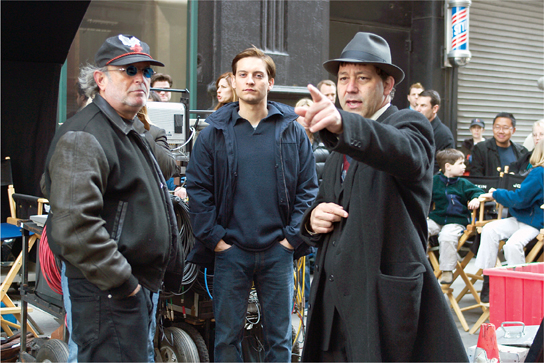
Director Sam Raimi makes a point to producer Avi Arad and star Tobey Maguire. Photo by Melissa Moseley.


